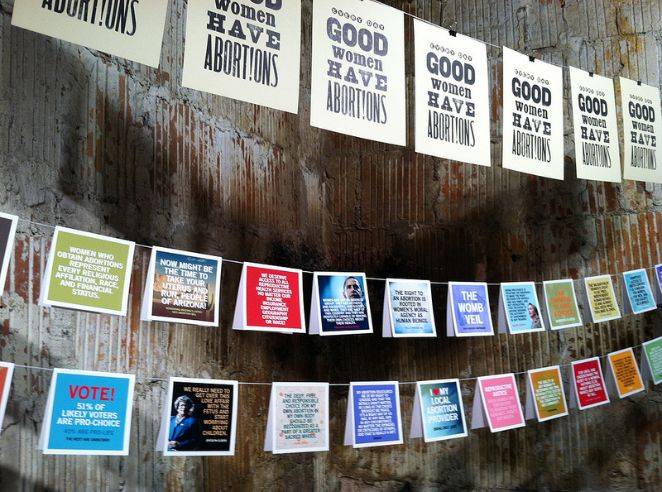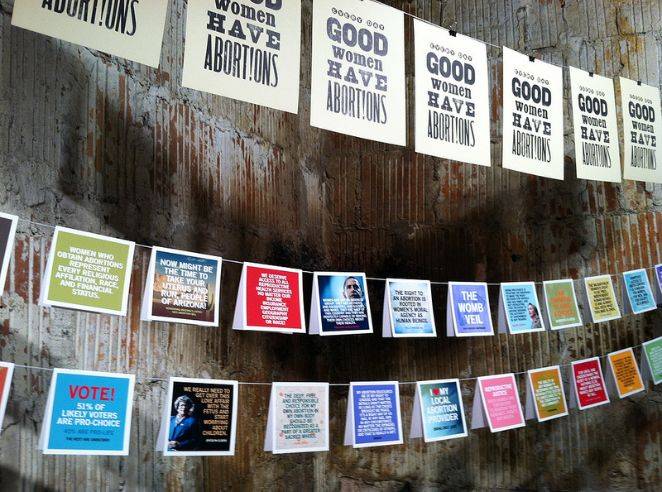 Two events, one happening this weekend and one next, will give Chambaners (I’m assuming that’s what we’re called?) the chance to take part in conversations about the current climate surrounding reproductive justice and abortion rights.
Two events, one happening this weekend and one next, will give Chambaners (I’m assuming that’s what we’re called?) the chance to take part in conversations about the current climate surrounding reproductive justice and abortion rights.
First, this weekend, as part of its “Dangerous Documentaries” series, the Art Theater Co-op will screen After Tiller, a new documentary about the four remaining doctors who openly provide third-trimester abortions to women in the United States. These doctors are all former colleagues Dr. George Tiller, who was murdered in 2009 by a pro-life activist.
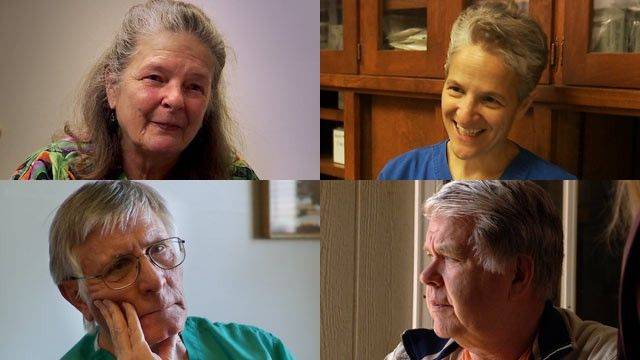
After Tiller screens on Saturday (10/26) at 5 p.m., Sunday (10/27) at 7 p.m., and again on Tuesday (10/29) at 5 p.m. What’s exciting about Sunday’s showing is that viewers will get to hear responses from four panelists from our community, all of whom support reproductive justice in their work. These panelists have very different avenues for doing pro-choice advocacy:
- Carol Ammons, an alderwoman from Urbana, works through public policy
- Lena Hann, a clinical instructor in the Department of Kinesiology and Community Health, works through education
- Diana Onken works with NARAL Pro-Choice America
- and Heather Ault, an activist, MFA Artist, and founder of the “4000 Years of Choice” project, seeks to create positive and affirmative visually-based messages about the history of abortion and contraception
Which brings me to the second event. Ault’s work is being featured in a solo art exhibition and fundraiser for NARAL Illinois Choice Action Team next weekend, November 1-3, at indi go Gallery. The show kicks off with an opening reception on November 1st from 6-9 p.m. $10 gets attendees champagne, door prizes, and the view some of Ault’s projects.
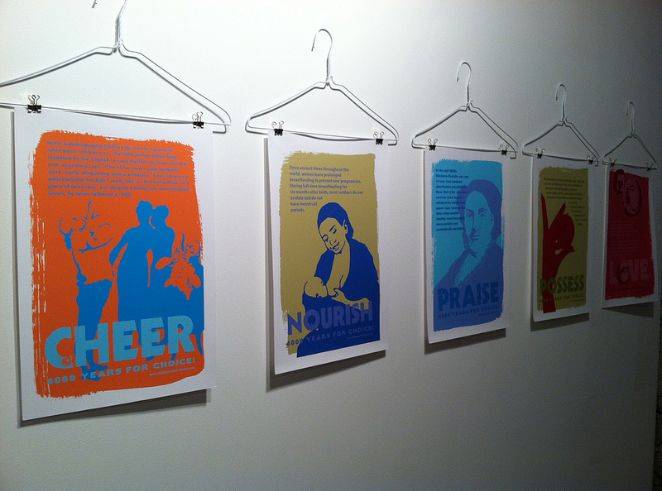
Because Ault is involved of both of these events, I spoke with her about her work, C-U’s reproductive justice landscape, and what to expect from the upcoming film screenings and gallery exhibition.
SP: Why do you think people should see After Tiller?
Ault: This film tells the human story behind the experience of being an abortion provider. There’s so much stigma around the work that they do. To see the human side of what they experience is really powerful, and it helps to position them as critical within the larger picture of reproductive rights. This film is fascinating because they’re usually behind closed doors and not very public about their work for their personal privacy and safety.
This film isn’t political propaganda. It’s a very humanistic story about these four people and the women who come to them in dire straights, who are looking to make good decisions about their lives.
SP: What do you expect the panel after Sunday’s screening will be like?
Ault: I think if you look, there’s always a broad coalition of people who are invested in women’s reproductive rights. But we don’t often get together. There’s no logical place to have a pro-choice gathering—a place to have discussion, meet each other, or share stories. Part of my hope is that this film and the panel discussion following will be a place for people to do those things. I also hope being there also encourages people to attend the art exhibition, which again isn’t a political space so much as a cultural and storytelling space to discuss pro-choice issues.
SP: How did you get involved in reproductive justice activism and representing the history of abortion and contraception in your artwork?
Ault: My interest in creating pro-choice art began about ten years ago when I was living in California. I was taking women’s studies classes, worked with several pro-choice organizations, and also worked at a pre-natal fetal imaging center that saw high-risk pregnancies. I had a lot of experience with reproductive health, so I was shocked to discover that the history of abortion and contraception was virtually unknown.
I’ve come to realize that even within strongly pro-choice circles, there’s a lot of stigma surrounding having an abortion. There’s something looming over having this experience that no one seemed to be talking about within pro-choice circles. That realization made me decide that telling the story of abortion as a human practice from the perspective of ancient history was very compelling, even more so than describing it as a feminist fight within contemporary society. This isn’t just a modern practice, but one that goes back thousands of years.
SP: How do your representations of the history of abortion and contraception fit into the larger pro-choice movement?
Ault: I’ve spent a lot of time studying language, both within the pro-choice and pro-life movements. Our movement’s language, which comes from national organizations, often uses phrases like “war on women” and “we’re embattled.” Honestly, I think that language drives people away and makes them feel like the movement isn’t about their lives, or their families, or their decisions. I think that’s part of the reason why the pro-choice movement has a hard time drumming up support despite the fact that millions and millions of women have abortions. One in three women will have an abortion in her lifetime, so it’s an incredibly common experience, but you don’t see all of those women becoming part of the pro-choice movement.
On the flip side, the pro-life movement has a very different style for talking about community, family, religion, and how they interact with one another. They use language that is inviting and that brings people in.
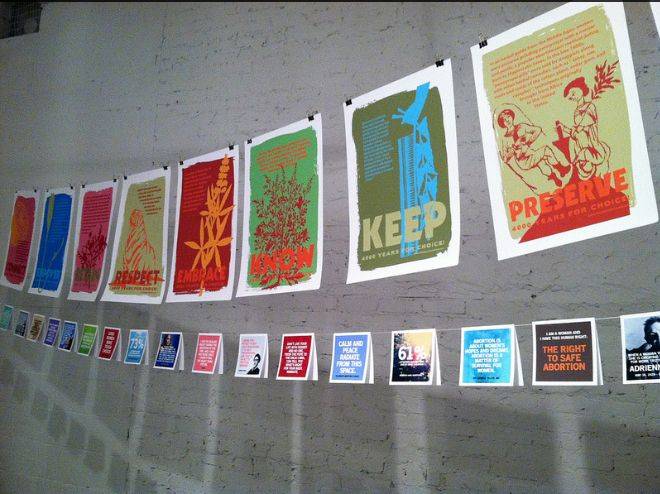
SP: What kinds of projects will the indi go show highlight?
Ault: The show has a few different bodies of work. It has the “4000 Years of Choice” poster series, which is a series of 50 posters that chronicles the history of abortion and contraception. The other series is “Reproductive Roots,” which is a social media and graphics series. That series is 300 graphic cards that highlight the positive, affirming statements made by the leaders in our movement, including bloggers, activists, journalists, politicians, abortion care providers, and women who have had abortions. There’s also a “Good Women” banner series that highlights the goodness of women who have had abortions. That last series has been shown twice at the Supreme Court in Washington, D.C for the 39th and 40th anniversaries of Roe v. Wade.
SP: How do you think these two events relate to the pro-choice landscape in C-U?
Ault: Well, first of all, there are two clinics here, only one of which provides surgical abortions. The Planned Parenthood here does not provide surgical abortions, and a lot of people don’t realize that.
In terms of the local community, one thing I often think about in the pro-choice movement is that we don’t create ways to visibly support issues related to reproductive justice. The pro-choice movement hasn’t done a good job inviting the community to get involved in local events to share our experiences. That’s different from the pro-life movement—you constantly see people outside clinics with anti-choice messages.
Sometimes it can feel like pro-choice supporters are apathetic. But I don’t think that’s because people within our community are apathetic. I think it’s because the national pro-choice movement hasn’t done a good job involving people in their communities. National pro-choice movements ask supporters to do one of three things: sign a petition, donate now, or contact your representative, rather than creating spaces to share stories to reduce stigma and build coalitions. I feel like cultural initiatives, like film screenings and art events, helps to meet this need.
At the local level, there aren’t many opportunities for pro-choice people to meet each other and connect, whereas the pro-life movement is great at plugging people in locally. For instance, the 40 Days for Life campaign made it normal and socially acceptable to protest a clinic. They took the stigma out of standing in front of a clinic, although in doing so, they put the stigma on women who go to those clinics.
The pro-choice movement hasn’t necessarily shifted to a grassroots focus, which I think is one thing we’re greatly missing.
SP: But I can see why pro-choice supporters don’t always want to participate in demonstrations in front of clinics, out of respect for women who use their services. What other spaces can be used to bring the pro-choice community together?
Ault: I definitely believe that the artist community has the ability to bring pro-choice supporters together through cultural events. And not just through art or film, but through other events, like music or performance. There are many different possibilities for building a strong pro-choice community, but artists especially can provide opportunities to create relationships among the pro-choice people.
Photos courtesy of Heather Ault








